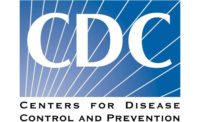The number of adult workers with elevated blood lead levels (BLLs) in the U.S. declined from 1994 to 2009, according to a Centers for Disease Control and Prevention (CDC) study published in last week’s Morbidity and Mortality Weekly Report.
Although the rate fell from 14 per 100,000 employed adults in 1994 to 6.3 in 2009, the report’s authors said the decrease might be attributable in part to a decline in the number of manufacturing jobs in the U.S..
They also noted that lead exposure remains an important health problem worldwide, and emphasized “the need for government agencies, employers, public health professionals, health-care providers, and worker-affiliated organizations to increase interventions to prevent workplace lead exposure, and the importance of conducting lead exposure surveillance to assess the effectiveness of these interventions.”
Lead exposure can result in acute or chronic adverse effects in multiple organ systems, ranging from subclinical changes in function to symptomatic, life-threatening toxicity. Approximately 95% of all elevated BLLs reported among adults in the United States are work-related. Workers involved in battery manufacturing, secondary smelting and refining of nonferrous metals, and painting and paper hanging are most likely to be exposed to lead on the job.
The most common nonoccupational exposures to lead were shooting firearms; remodeling, renovating, or painting; retained bullets (gunshot wounds); and lead casting.
Job activities known to involve the use or disturbance of lead include: handling lead-containing powders, liquids, or pastes; production of dust or fumes by melting, burning, cutting, drilling, machining, sanding, scraping, grinding, polishing, etching, blasting, torching, or welding lead-containing solids; and dry sweeping of lead-containing dust and debris.
Lead exposure drops among U.S. workers (7/7)

Looking for a reprint of this article?
From high-res PDFs to custom plaques, order your copy today!





